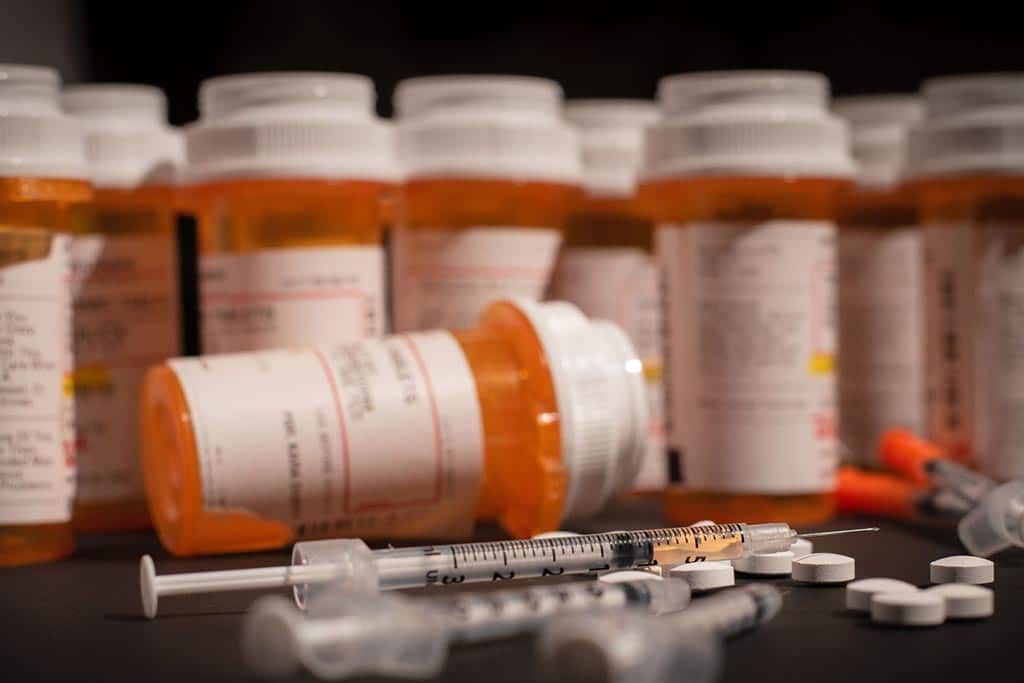Signs You Might Need a Detox Program
Signs You Might Need a Detox Program Recognizing when it’s time to seek help for substance use can be challenging. Many people minimize their symptoms,

January 18, 2021
Methadone and Suboxone are medications used to treat heroin and painkiller dependence. Both medications are commonly used at drug and alcohol detox centers to help people safely and comfortably withdraw from opioids. However, each medication interacts with the body and brain in different ways. Most patients in recovery from opioid dependence usually only receive one drug or the other.
Here’s a closer look at the difference between methadone and Suboxone, and how to determine which medication may be best for you or a loved one recovering from opioid dependence.
Methadone is an opioid agonist medication, which means it binds to opioid receptors in the brain just like any other opioid. However, unlike other opioids, methadone does not produce euphoria. Methadone helps treat opioid dependence because it nulls opioid withdrawal symptoms and prevents patients from experiencing euphoria and drug cravings.
Suboxone is the brand name for a drug containing a combination of buprenorphine and naloxone. Buprenorphine is a partial opioid agonist, while naloxone is an opioid antagonist. Partial agonist opioids like buprenorphine bind to opioid receptors in the brain, but to a far lesser degree than full agonists like methadone, according to the Indian Health Service. Antagonists like naloxone block opioids from attaching to opioid receptors, which means people who use an opioid drug while on naloxone will not experience the euphoric and sedative effects of the opioid.
Methadone is available in several different forms, including tablets and solutions that can be injected or taken by mouth. Suboxone comes as an oral film dissolved in the mouth, either under the tongue or against the cheek. Methadone is often far more potent than Suboxone because it is a full agonist; therefore, this drug is not available by prescription due to its abuse potential. Methadone must be taken at a drug detox center or methadone clinic where the administration is overseen by medical professionals. Suboxone is available by prescription and can be taken at home.
Methadone and Suboxone may also be used to reduce withdrawal symptoms in patients going through detox at drug and alcohol rehab centers. These medications effectively relieve withdrawal symptoms and drug cravings and make patients feel more comfortable as they recover from opioid dependence.
Suboxone should not be taken by patients using methadone, as it can trigger opioid withdrawal and negates the purpose of its use to relieve opioid withdrawal symptoms. According to the World Health Organization (WHO), opioid antagonists like naloxone — an ingredient in Suboxone — can trigger opioid withdrawal in patients using methadone. Methadone should also not be combined with partial agonists like buprenorphine. Suboxone is a combination of naloxone and buprenorphine. The WHO also states that patients who are using buprenorphine and methadone to treat chronic pain may experience partial pain relief when combining these two medications.
Taking Suboxone and methadone together can result in severe opioid withdrawal. According to data produced by StatPearls Publishing, opioid withdrawal can be triggered when patients with opioids in their system such as methadone take an opioid partial agonist like buprenorphine or an antagonist like naloxone. Given that Suboxone is a combination of buprenorphine and naloxone, patients who are using methadone should not take Suboxone if their goal is to prevent withdrawal.
Opioid withdrawal symptoms that can occur when Suboxone and methadone are combined include:
The National Library of Medicine states that opioid withdrawal symptoms in methadone users can begin within 30 hours of the last methadone dose.
Opioid withdrawal can be treated in one of several ways after a person has taken methadone and Suboxone. Treatment varies from one person to the next based on their unique situation and factors such as age, the severity of opioid dependence, and known allergies or reactions to medications.
Patients who have been using methadone for some time may be put on tapering schedules where their daily doses of methadone are gradually reduced over several weeks or months. Methadone doses are usually reduced after the patient has stopped experiencing withdrawal symptoms on their current dose. With this treatment method, doses of methadone are reduced until the patient is no longer using the medication.
Patients who aren’t put on a methadone tapering schedule may be switched from methadone to buprenorphine for a short period to reduce opioid withdrawal symptoms. The third treatment option involves medical detox using opioid antagonist drugs naltrexone and naloxone. Naltrexone blocks the euphoric and sedative effects of opioids and reduces opioid cravings, while naloxone blocks and reverses the effects of other opioids. According to SAMHSA, patients who are using methadone should wait for between 10 and 14 days before using naltrexone to reduce the risk of withdrawal symptoms.
Switching from methadone to Suboxone may be difficult in the sense that you may have to wait several days after quitting methadone before you start taking Suboxone. It usually takes several days for methadone to leave the body, given it is a long-acting drug. Switching immediately from methadone to Suboxone can trigger severe withdrawal, which is why doctors recommend waiting before using Suboxone after quitting methadone.
There are several reasons a patient may want to switch from methadone detox to Suboxone detox. First, Suboxone is available with a prescription and can be taken conveniently at home, while methadone is available only at a clinic and requires patients to drive to the clinic every day to take their daily dose. Additionally, some patients experience several side effects when taking methadone, and want to try Suboxone with hopes it will produce fewer or milder side effects.
If you are interested in making the switch from methadone to Suboxone, talk to your doctor to discuss the potential effects of switching medications to determine the best treatment option.
Your doctor best determines the exact length of time you should wait to take Suboxone after using methadone. StatPearls Publishing recommends waiting 24 to 48 hours to start buprenorphine medications after taking methadone. Recommendations from other healthcare providers vary significantly, with some suggesting waiting between 48 and 72 hours to take Suboxone after methadone, and others suggesting waiting between 36 hours and one week.
After you quit taking methadone, most doctors and drug detox centers will evaluate your withdrawal symptoms daily to determine the best time to start taking Suboxone. Each patient responds to treatment differently; therefore, many doctors will personalize treatment regimens accordingly.
Summer House Detox Center offers drug and alcohol detox in Florida for people who want to recover from their substance use disorders in a relaxing residential/inpatient setting. If you need help recovering from opioid dependence, our addiction treatment center in Florida can help you experience a safe, comfortable recovery with access to top-notch amenities.
Contact Summer House Detox Center today at 800-719-1090 to speak with a qualified addiction specialist and learn more about our available Suboxone and methadone detox treatments. Or fill out our free insurance verification form to determine whether your health plan can cover treatment at Summer House.
Disclaimer: This post serves a strictly educational use. It does not reflect the services, products, or therapeutic approaches of this establishment or its healthcare practitioners. The purpose of this blog is not to advertise the products, services, or therapeutic approaches of any other establishment that may be associated with this site. On the subject of safe or legal services, products, and appropriate therapies, recommendations ought to be given by a qualified professional on a case to case basis.
Signs You Might Need a Detox Program Recognizing when it’s time to seek help for substance use can be challenging. Many people minimize their symptoms,
How to Know If You or a Loved One Needs Detox Support Recognizing when detox support may be necessary can be difficult, especially when emotions,

Breaking the Stigma: What It Really Means to Seek Detox Support Seeking help for substance use is a courageous and often life-changing decision. Yet for
For immediate assistance, please call our Admissions Specialists at 800-719-1090.
Speak With A Qualified Addiction Specialist 24/7